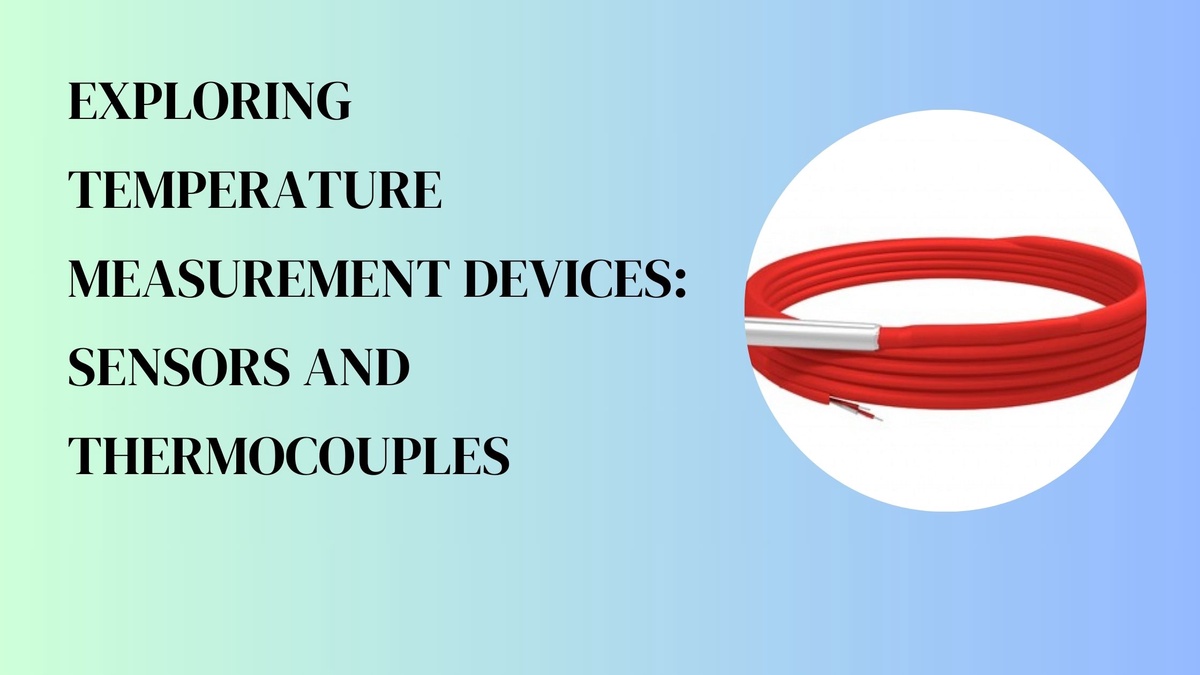Temperature measurement is critical across various industries, from ensuring product quality to maintaining safe working environments. Among the myriad of temperature measurement devices available, temperature sensors and thermocouples stand out as indispensable tools. In this article, we delve into the workings and accuracies of temperature sensors, temperature and humidity transmitters, J type thermocouples, and K type thermocouples.
Temperature Sensors: Temperature sensors are electronic devices designed to measure temperature accurately. They utilize various principles such as resistance, voltage, or infrared radiation to detect temperature changes. Common types include:
-
Resistance Temperature Detectors (RTDs): RTDs operate on the principle that the electrical resistance of metals like platinum changes predictably with temperature. They offer high accuracy and stability over a wide temperature range.
-
Thermistors: Thermistors are semiconductor devices whose resistance changes significantly with temperature. They are cost-effective but typically offer lower accuracy compared to RTDs.
-
Infrared Temperature Sensors: These sensors detect infrared radiation emitted by objects to determine their temperature. They are non-contact and suitable for measuring temperatures of inaccessible or moving objects.
Temperature and Humidity Transmitters: Temperature and humidity transmitters are crucial in environments where both temperature and humidity levels need monitoring. These devices often incorporate both temperature and humidity sensors, providing accurate readings for both parameters simultaneously. They are widely used in HVAC systems, greenhouses, and industrial processes where maintaining specific environmental conditions is vital.
J Type Thermocouple Accuracy: J type thermocouples are composed of iron and constantan wires. They are suitable for use in the range of -210°C to 1200°C. The accuracy of J type thermocouples typically ranges from ±1.5°C to ±2.2°C over their operating range. However, factors such as aging, oxidation, and calibration drift can affect their accuracy over time. Regular calibration and maintenance are essential to ensure precise temperature measurements.
K Type Thermocouple Accuracy: K type thermocouples consist of chromel and alumel wires and are widely used due to their versatility and reliability. They can measure temperatures from -200°C to 1372°C. The accuracy of K type thermocouples varies depending on the specific application and environmental conditions but typically ranges from ±1.5°C to ±2.5°C. Like J type thermocouples, their accuracy can be influenced by factors such as drift and environmental exposure.
Conclusion: Temperature measurement is a critical aspect of various industrial, scientific, and commercial processes. Temperature sensors, transmitters, and thermocouples play vital roles in ensuring accurate temperature monitoring and control. Understanding their principles of operation and accuracy characteristics is essential for selecting the most suitable device for a particular application. Regular calibration and maintenance are key to preserving accuracy and reliability over time.


No comments yet